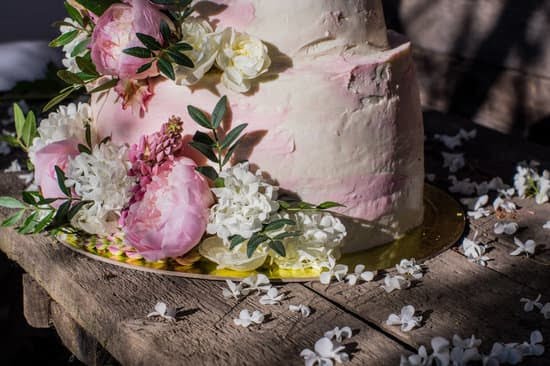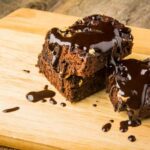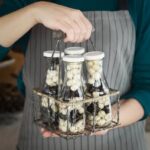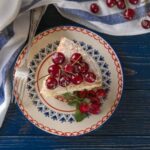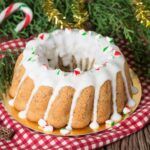Birch bark cake decorating has become a popular trend in the world of confectionery, with its rustic charm and natural beauty capturing the hearts of both bakers and cake enthusiasts. This unique technique allows decorators to create stunning cakes that resemble the intricate patterns and textures found on real birch bark. From weddings to birthdays, this style evokes a sense of simplicity and elegance that adds a touch of nature to any special occasion.
In this article, we will delve into the art of birch bark cake decorating, exploring its origins, symbolism, and the materials needed to achieve this distinctive look. We will also provide a step-by-step tutorial on how to create a realistic birch bark texture on a cake, as well as tips and tricks for adapting the technique to different cake shapes and sizes.
Additionally, we will discuss ways to enhance the birch bark design by incorporating natural elements such as leaves and twigs. Through showcasing stunning examples from professional cake decorators, we hope to inspire readers with limitless possibilities for their own creations. Finally, we will address frequently asked questions about birch bark cake decorating, addressing common concerns and challenges that may arise.
Join us as we embark on a journey through the enchanting world of birch bark cake decorating. Discover how this timeless art form continues to captivate and delight both those who create these edible masterpieces and those lucky enough to enjoy them on their special occasions.
Understanding the origins and symbolism of birch bark in cake design
Birch bark has long been admired for its unique beauty and versatility. Its use in cake design adds a touch of rustic charm and natural elegance to any occasion. Understanding the origins and symbolism behind birch bark can provide a deeper appreciation for the artistry of birch bark cake decorating.
The origins of using birch bark in cake design can be traced back to ancient civilizations, particularly in regions where birch trees are abundant. Native American tribes used birch bark for various practical purposes, such as constructing canoes and shelters. However, they also recognized its aesthetic value and incorporated it into their craftsmanship, including decorative items like baskets and utensils.
Symbolically, the birch tree has a rich history across cultures. In folklore and mythology, it is often associated with renewal, rebirth, and purity. The white bark of the birch tree represents lightness and innocence. It is also seen as a symbol of strength and resilience due to its ability to grow even in harsh environments.
In cake design, incorporating birch bark can evoke feelings of nostalgia and connection to nature. It adds a rustic yet elegant aesthetic that is perfect for outdoor or nature-themed events. Whether it’s a wedding cake inspired by an enchanted forest or a birthday cake celebrating the beauty of the changing seasons, birch bark design brings a sense of enchantment and tranquility to any celebration.
Exploring the materials and tools needed for birch bark cake decorating
One of the key factors in achieving a realistic birch bark effect on a cake is having the right materials and tools. Here is a rundown of the essentials needed for successful birch bark cake decorating:
- Fondant or modeling chocolate: Both fondant and modeling chocolate are commonly used to create the base texture for the birch bark design. Fondant is a pliable icing that can be rolled out and draped over the cake, while modeling chocolate, made from melted chocolate and corn syrup, can be molded and shaped into the desired texture.
- Cake smoother: A cake smoother, also known as a fondant smoother, is used to smooth out any imperfections in the fondant or modeling chocolate once it has been applied to the cake. This tool helps achieve a clean surface for creating the birch bark texture.
- Texture mat or embossing mat: These mats are specifically designed with birch bark patterns and textures. They are placed on top of the rolled-out fondant or modeling chocolate and pressed firmly to transfer the pattern onto the surface.
- Food coloring or edible paint: To achieve the characteristic colors of birch bark, food coloring or edible paint in shades of brown, gray, black, and white are necessary. These colors can be mixed together to create different variations and depths within the bark design.
- Brushes: Soft-bristle brushes are useful for painting on colors and adding small details to enhance the birch bark effect. Different sizes of brushes may be needed depending on the size of your cake and level of detail desired.
- Edible glue: Edible glue is essential for attaching additional decorations such as leaves or twigs to enhance your birch bark design. You can either purchase ready-made edible glue or make your own by mixing together water and tylose powder.
- Optional tools: Depending on your desired level of intricacy, additional tools such as veining tools, wood grain stamps, or edible markers can be used to enhance the birch bark effect.
Having the right materials and tools is crucial in achieving a realistic birch bark cake design. With these essentials in hand, you can confidently embark on creating your own stunning birch bark cakes.
Step-by-step tutorial
Birch bark cake decorating has become increasingly popular in the world of cake design for its rustic charm and natural beauty. If you are interested in creating a realistic birch bark texture on a cake, this step-by-step tutorial will guide you through the process.
To begin, gather all the necessary materials and tools for birch bark cake decorating. You will need fondant or gum paste in white and brown colors, a rolling pin, a knife or pizza cutter, a brush, cocoa powder or food coloring, and parchment paper.
- Prepare your cake: Start by baking and cooling your desired cake flavor and shape. Make sure it is fully cooled before starting the decoration process.
- Create the base layer: Roll out white fondant or gum paste to cover your entire cake. Smooth it down with your hands or a fondant smoother to remove any air bubbles or wrinkles.
- Cut out and apply bark strips: Take brown fondant or gum paste and roll it out to about ⅛ inch thickness. Use a knife or pizza cutter to create long strips resembling tree bark. The width of each strip can vary based on your preference, but aim for a consistent size throughout. Apply the strips vertically along the sides of the cake, slightly overlapping each one to imitate the natural layers of birch bark.
- Texture the bark: Use a brush dipped in cocoa powder or food coloring mixed with water to create shadows and add depth to the birch bark strips. Apply these shadows using light strokes in vertical lines, following the direction of the strips.
- Add details: To enhance the realism of your birch bark design, lightly score horizontal lines across some strips using a clean knife or toothpick to simulate natural markings on tree bark.
- Finish with protective coating: Once you are satisfied with your birch bark texture, spray or brush on an edible varnish or glaze to give it a smooth and finished appearance. This will also help preserve the design.
By following these steps, you can create a stunning birch bark texture on your cake that will impress your guests. With practice and experimentation, you can adapt this technique to different cake shapes and sizes, adding an element of nature to any special occasion.
Tips and tricks for achieving the perfect birch bark effect on different cake shapes and sizes
One of the challenges in birch bark cake decorating is achieving the perfect birch bark effect on different cake shapes and sizes. Each cake design presents its own set of unique considerations, but with some tips and tricks, you can achieve a realistic and stunning birch bark texture on any cake.
Consideration for round cakes
For round cakes, it’s important to pay attention to the proportions and symmetry of the birch bark pattern. Start by applying a thin layer of white or ivory buttercream all around the cake as a base. Then, using a small offset spatula or a brush, create vertical lines from top to bottom to resemble the natural wood grain of birch bark.
It’s essential to keep these lines straight and evenly spaced. To add depth and dimension, lightly dab a clean brush dipped in cocoa powder along some parts of the lines to create darker spots. Remember that birch bark is not perfectly smooth, so don’t be afraid to add textured details with your brush.
Tackling square or rectangular cakes
When working with square or rectangular cakes, adapt the technique slightly by creating horizontal lines as well as vertical ones. You want to mimic how birch bark wraps around a tree trunk naturally. Apply the same principles as with round cakes, starting with a base layer of buttercream and adding texture with vertical lines first.
Then create horizontal lines at regular intervals across the sides of the cake, making sure they align with each other vertically. Use an offset spatula or straight-edge tool for this task for clean and straight lines.
Dealing with tiered cakes
For tiered cakes, it’s important to maintain consistency in your birch bark design across all tiers. Begin by applying buttercream onto each individual tier before adding texture using the techniques mentioned earlier. When stacking multiple tiers together, pay attention to aligning the patterns seamlessly. This can be achieved by carefully matching the vertical and horizontal lines on each tier. Take your time during the stacking process to ensure a cohesive and visually appealing overall birch bark effect.
Remember that practice makes perfect, so don’t be discouraged if your first attempt doesn’t turn out as expected. With some patience and creativity, you’ll be able to achieve the perfect birch bark effect on any cake shape and size. Experiment with different tools, techniques, and even color variations to make your birch bark cake truly unique and stunning.
Enhancing the birch bark design
One of the key aspects of birch bark cake decorating is the ability to enhance the design by incorporating natural elements like leaves and twigs. These elements not only add a touch of authenticity to the cake but also enhance its overall visual appeal. In this section, we will explore some creative ways to incorporate these natural elements into your birch bark cake design.
One popular way to enhance the birch bark design is by adding edible leaves made from fondant or gum paste. These leaves can be shaped and colored to resemble real ones, creating a lifelike effect on the cake. They can be arranged in various patterns, such as scattered across the surface or clustered around certain areas of the cake. For an even more realistic look, you can dust them with edible powder to add depth and shading.
Another way to enhance the birch bark design is by incorporating twigs or branches into the cake. You can use small branches from real trees (make sure they are safe for consumption) or make your own using edible materials such as chocolate covered pretzel rods or thin strips of modeling chocolate.
These twigs can then be placed strategically on the cake to mimic how they would naturally grow on a tree trunk. They can be positioned vertically along the sides of the cake or arranged horizontally around it for a stunning effect.
When adding these natural elements, it’s important to consider their size and proportion in relation to the overall cake design. If you have a smaller cake, opt for smaller leaves and twigs that won’t overpower the delicate proportions. Conversely, if you have a larger cake, you may want to scale up these natural elements for maximum impact. Experiment with different arrangements and placements until you achieve a look that suits your preferences.
Adding natural elements like leaves and twigs is an excellent way to elevate your birch bark cake design and create a visually stunning centerpiece for any occasion. Not only do these elements add intricacy and texture to the overall design, but they also add a touch of nature and organic beauty. With some creativity and attention to detail, you can create a birch bark cake that truly stands out from the crowd.
Showcasing stunning birch bark cake designs
Birch bark cake decorating has become increasingly popular in recent years, thanks to its rustic charm and natural aesthetic. Professional cake decorators have taken this trend to new heights, creating stunning birch bark cake designs that are sure to impress. In this section, we will showcase some of these incredible creations for inspiration.
- Birch Bark Wedding Cake: This elegant three-tiered wedding cake features a realistic birch bark texture that wraps around each layer. The attention to detail is remarkable, with intricate patterns and shading that mimic the authentic look of birch bark. The cake is further enhanced with delicate sugar flowers cascading down one side, adding a touch of romance and elegance.
- Woodland Themed Birthday Cake: This whimsical woodland themed birthday cake takes its inspiration from the forest floor. The bottom tier features a textured birch bark design, while the top tier showcases a moss-covered tree trunk. To complete the look, edible mushrooms, acorns, and leaves are carefully placed on the cake for a charming effect. This design is perfect for nature lovers or anyone looking for a unique birthday cake idea.
- Fall Harvest Celebration Cake: This fall-inspired cake captures the colors and textures of the season beautifully. The main tier showcases a hand-painted birch bark design with warm hues of brown and orange, while an additional tier replicates fallen leaves in various shades of red, yellow, and green. A sprinkle of edible gold leaf adds a touch of luxury to this festive creation.
These examples demonstrate just how versatile birch bark cake decorating can be in creating beautiful and unique designs for various occasions. Whether it’s a wedding celebration or a themed birthday party, incorporating elements of nature can truly elevate any cake design.
By highlighting these stunning birch bark cakes created by professional decorators, individuals can find inspiration for their own creations or communicate their desired design to their own chosen decorator. With careful planning and attention to detail, anyone can achieve the awe-inspiring beauty of a birch bark cake design.
Frequently asked questions about birch bark cake decorating
Birch bark cake decorating has become a popular trend in the world of baking, but many beginners may have questions or face challenges when trying to create this unique design. In this section, we will address some frequently asked questions and provide solutions to common concerns and challenges encountered in birch bark cake decorating.
- Q: Can I use real birch bark on my cake?
- A: While using real birch bark might seem like an authentic choice, it is not recommended for cake decoration. Real birch bark can contain dust, bacteria, or other impurities that are not safe for consumption. Instead, it is best to use edible materials specifically designed for cake decorating.
- Q: How do I achieve a realistic birch bark texture on frosting?
- A: To create a realistic birch bark texture on your cake, you can use various techniques such as painting, piping, or stenciling. One common method is to paint the frosting with food coloring or cocoa powder mixed with alcohol to achieve shades of gray and brown. Then, use a small brush or sponge to add markings and lines resembling the natural patterns found on birch bark.
- Q: Can I make a birch bark design on fondant-covered cakes?
- A: Absolutely. Fondant-covered cakes provide a smooth surface that makes it easier to achieve a realistic birch bark effect. You can either paint the fondant directly or create an embossed texture by using specialty mats or rolling pins designed for impression patterns.
- Q: How do I prevent the birch bark pattern from smearing or melting?
- A: To ensure that your birch bark design stays intact and does not smear or melt under certain conditions, allow your frosting to dry completely before handling it. If you live in a humid climate, refrigerate your cake for a short period of time before serving.
- Q: Can I achieve the same effect with buttercream frosting?
- A: Yes, you can achieve a birch bark design with buttercream frosting as well. Use a palette knife or a small piping tip to create the texture and markings resembling birch bark. If needed, refrigerate your cake briefly to allow the buttercream to firm up before adding any other decorations.
Birch bark cake decorating may have its challenges, but with the right techniques and materials, you can create stunning designs that will impress your guests. Experimenting with different methods and adding your own personal touch will make your birch bark cakes truly unique and memorable.
Final thoughts
Birch bark cake decorating offers a unique and rustic charm that is unmatched by other cake design techniques. The origins and symbolism of birch bark make it a popular choice for special occasions, adding an element of natural beauty to any cake. By using the right materials and tools, you can easily create a realistic birch bark texture on your cakes.
Achieving the perfect birch bark effect may require some practice and experimentation, especially when working with different cake shapes and sizes. However, with the right tips and tricks, you can create stunning designs that capture the essence of birch bark. Adding natural elements like leaves and twigs can further enhance the beauty of your birch bark design.
If you’re looking for inspiration, professional cake decorators have created breathtaking designs using birch bark as their main theme. These stunning creations showcase the versatility and creativity that can be achieved with this decorative technique.
In conclusion, birch bark cake decorating has a lasting allure that continues to captivate both bakers and recipients alike. Its appeal lies in its organic beauty and ability to evoke feelings of nature and nostalgia. Whether it’s a wedding, birthday, or any other special occasion, incorporating birch bark into your cake design is sure to leave a lasting impression on your guests.
So why not give it a try? Let the magic of birch bark transform your cakes into works of art.
Frequently Asked Questions
How do you decorate a cake to look like birch bark?
To decorate a cake to look like birch bark, start by preparing your cake with a smooth coat of white or pale-colored frosting as the base. Then, use a clean and dry paintbrush or sponge to create the texture of birch bark on the sides of the cake. Dip the brush or sponge lightly in cocoa powder or brown food coloring mixed with a small amount of water, and gently dab it onto the frosting in vertical lines that resemble tree bark patterns.
Be careful not to add too much color at once; you can always add more layers for a more realistic effect. Additionally, you can use an edible food marker to draw horizontal lines across the vertical ones to further simulate natural crevices found on birch bark.
How to make cake frosting look like birch tree?
To achieve a frosting that looks like a birch tree, begin by tinting your frosting with dark brown gel food coloring. Using an offset spatula or a butter knife, apply a thin layer of brown frosting all over the cake as the base color. Then, take some white frosting and place it into a piping bag fitted with a narrow round tip or snip off a small opening if using a disposable plastic bag.
Pipe thin lines of white frosting vertically along the sides of the cake, starting from top to bottom, leaving spaces between each line for the brown base to show through. This will mimic the appearance of birch tree bark.
How to make birch log cake?
Making a birch log cake involves several steps but can be an incredibly impressive result. Start by baking two chocolate cakes in cylindrical pans (such as soup cans) so they resemble logs when stacked together later on. Once cooled, level off any domed tops and cut one of the cakes into two equal halves horizontally for stacking purposes. Spread some chocolate ganache or fudge icing over one half and stack the other half on top to create height and depth resembling birch logs’ irregular shape.
Crumb-coat the entire “log” with chocolate frosting to create a smooth surface. Next, prepare some vanilla or cream-colored frosting and use a fork or small spatula to create a pattern that resembles tree bark by swirling the frosting in irregular lines on the sides of the cake. Finally, you can optionally use an edible food marker or dark brown icing to draw thin horizontal lines across the vertical patterns to mimic birch log’s natural texture.

Welcome to our cake decorating blog! My name is Destiny Flores, and I am the proud owner of a cake decorating business named Cake Karma. Our mission is to provide delicious, beautiful cakes for all occasions. We specialize in creating custom cakes that are tailored specifically to each customer’s individual needs and tastes.

